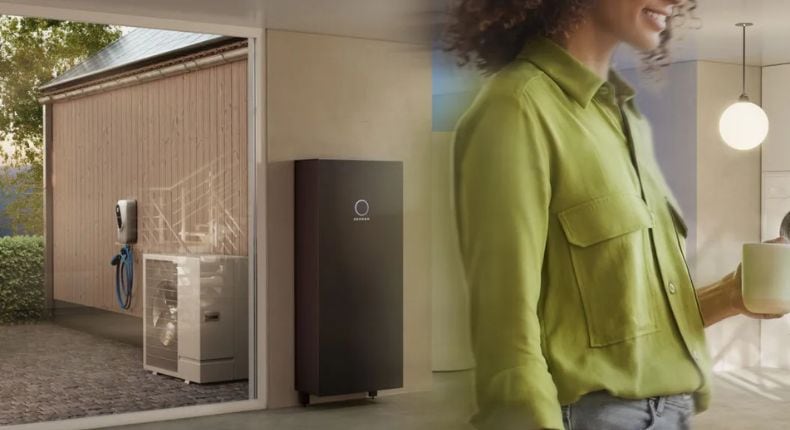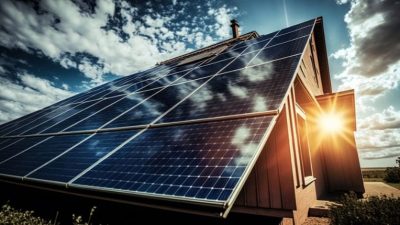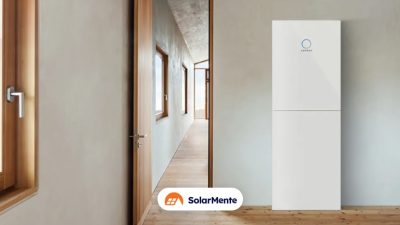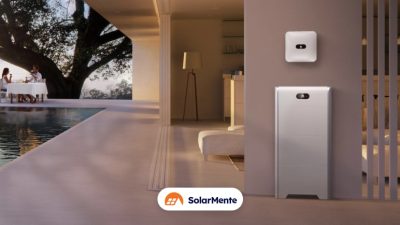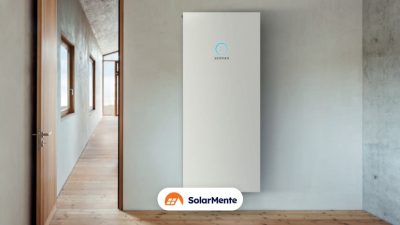The lifetime of solar batteries is a crucial factor to consider for those opting for photovoltaics. Batteries not only store the energy generated by the solar panels, but also ensure a continuous supply even in the absence of sunlight.
As well as explaining the lifespan of solar panels, in this article, we will explore the different types of solar batteries, the factors that affect their lifespan and how to ensure they are kept in the best possible condition to maximise their lifespan.
Factors Affecting the Life of Solar Batteries
The lifetime of solar batteries does not only depend on the type of battery and its quality, but also on several external and operational factors. The most influential factors are listed below:
Solar Battery Type
The type of solar battery is critical in determining its lifetime. Different battery technologies have different characteristics and life expectancy.
For example, lithium-ion batteries generally have a longer lifespan than lead-acid batteries. Knowing the specific characteristics of each type of battery will allow you to make an informed decision when selecting the best option for your solar system.
Battery Quality
Battery quality is another crucial factor. High quality batteries, made with superior materials and advanced technologies, tend to last longer than lower quality batteries. Investing in a quality battery may seem more expensive initially, but in the long run it is more cost-effective because of its longer life and higher performance.
Use and Maintenance
The way a solar battery is used and maintained can significantly affect its lifetime. It is essential to follow the manufacturer’s recommendations for use and maintenance. This includes avoiding overcharging and deep discharging of the battery, as well as regular checks and maintenance to detect and fix potential problems early.
- Frequency of Use: Batteries that are used constantly and are frequently charged and discharged may experience faster wear and tear.
- Regular maintenance: Cleaning connections, checking electrolyte levels (in the case of lead-acid batteries) and making sure there is no corrosion are essential practices.
Environmental conditions
Environmental conditions, such as temperature and humidity, can have a significant impact on the lifetime of solar batteries.
- Temperature: Batteries work best in moderate temperatures. Extreme temperatures, both hot and cold, can reduce their efficiency and life span. It is recommended that batteries be installed in a protected and ventilated location to maintain a stable temperature.
- Humidity: High humidity can cause corrosion of battery components, which negatively affects battery performance and durability. Keeping batteries in a dry, well-ventilated environment helps prevent these problems.
Loading and unloading cycles
The lifetime of a solar battery is also influenced by the frequency and depth of charge and discharge cycles.
- Deep Cycle vs. Shallow Cycle: Batteries that are deep-discharged on a regular basis tend to have a shorter life span compared to those that are kept on a shallower charge cycle. Avoiding deep discharges and maintaining a constant charge level can prolong battery life.
- Cycling Frequency: The more charge and full discharge cycles a battery experiences, the faster it will wear out. Opting for batteries designed to withstand multiple deep cycles, such as lithium-ion batteries, can be an efficient solution.
Installation and Configuration
The correct installation and configuration of the storage system is also vital.
- Battery Management System (BMS): A good BMS can help monitor and manage the charging and discharging of batteries, ensuring they operate within safe limits and optimising their performance and life.
- Correct Configuration: Ensuring that batteries are correctly configured and connected according to the manufacturer’s specifications prevents operational problems that can shorten battery life.
Signs that a Battery Needs Replacing
Knowing when it’s time to replace a solar battery is crucial to maintaining the efficiency and reliability of your solar power system. Here are some clear signs that your battery may be reaching the end of its useful life:
Decrease in Performance
One of the most obvious signs that a battery needs to be replaced is a decline in performance. If you notice that the power output of your solar panels has decreased significantly and there is no other apparent cause, it is likely that the battery is no longer holding a charge optimally.
Battery Age
Each type of battery has an estimated lifespan. For example, lead-acid batteries typically last 3-5 years, while lithium-ion batteries can last up to 10 years or more. If your batteries have exceeded these periods, it is advisable to consider a replacement, even if they still appear to be working.
Loading problems
If you notice that the batteries do not fully charge after a sunny day, or if the charge runs out quickly, it may be an indication that the storage capacity has decreased. This problem may arise due to cell ageing or internal malfunction.
Leaks or Visible Damage
Regularly check your batteries for signs of corrosion, fluid leakage or physical damage. These problems not only affect battery performance, but can also be dangerous. Any sign of visible damage is a clear sign that the battery should be replaced immediately.
Reduced Autonomy
If the autonomy of your solar system has decreased, i.e. if the batteries can no longer store enough energy to meet your daily needs, it is time to consider a replacement. This can be especially noticeable during periods of low solar production, such as in winter or on cloudy days.
Additional Signals
- Unusual Noise: Any unusual sound coming from the batteries may be a sign of an internal problem.
- Anomalous Temperature: If the battery becomes hotter than normal during charging or discharging, it may be failing.

